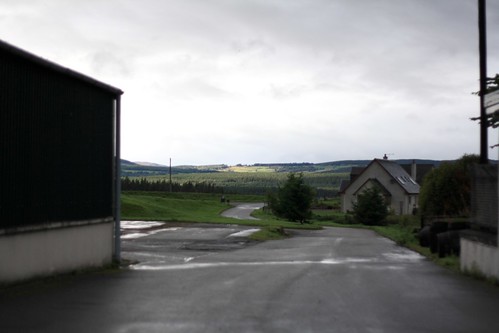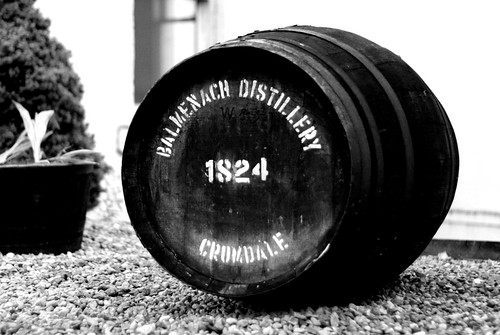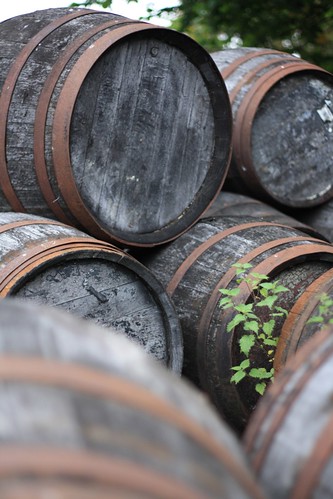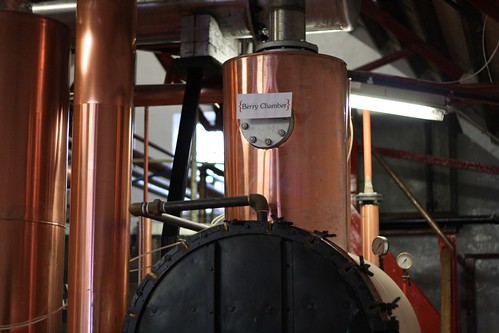It's been a while since I took some time off work, so being nominated for CLASS Magazine's Bartender of the Year award seemed like the perfect opportunity to sack it off for a week and check out the bright lights of London town. Happily, the competition coincided with the second edition of London Cocktail Week, which meant there was a long list of events and seminars that would keep me off the streets.
Sorting out the award was the first order of business, and the other nine finalists and myself - Justyn Bell (Hausbar, Bristol), Ryan Chetiyawardana (Worship Street Whistling Shop, London), George Collyer (Hotel du Vin, Bristol), Maxime Creusot (The Player, London), Jamie Jones (Cocktail & Spirits Initiative, Chester/NE England), Tristan Stephenson (Purl, London), David White (Tigerlily, Edinburgh), Susie Wong (Australasia, Manchester), and James Wynn-Williams (All Star Lanes, London) - met at the Cabinet Room in Bermondsey to do battle over three drinks and a written test set by the Soulshakers' Kevin Armstrong.
The Cabinet Room, incidentally, is the bar that takes up the ground floor of Simon Difford's apartment. It's among the more impressive living rooms I've seen, with cabinets of vintage glassware adorning one wall, super comfy leather sofas, and a fully featured bar right in the middle. The back bar contains no less than three different brands of blue curaçao - that stat just became my benchmark of how well stocked a bar is.
The three drinks required were a classic Daiquiri, "any cocktail of your own creation" (with a Bacardi Brown-Forman Brands product as the base spirit), and a classic cocktail drawn at random from a list of fifteen. My Daiquiri didn't come out as well as I'd hoped - I made some good decisions (using the Bacardi 1909 Heritada limited edition bottling at 44.5% ABV as opposed to the standard Superior) and some bad ones (there's a reason no-one uses icing sugar as a sweetening agent, I guess); I drew the Whisky Sour for my classic and that went pretty well, although some of the judges felt it may have been a touch too sour for their tastes. I was happy enough with my original drink but the point I kept hearing back from the judges - CLASS magazine editor Simon Difford, BBFB's head of training Alex Turner, 2010 winner Joey Medrington, and Kevin Armstrong - was that they felt bourbon and Campari wasn't a natural pairing; by extension, perhaps the recipe's missing just one more ingredient to bridge to the two.
Sophomore
45ml Woodford Reserve Bourbon
15ml Campari
15ml clarified lemon juice
10ml grenadine
Stir all ingredients with ice and strain into a chilled 8oz stemmed glass. Express and then discard a twist of orange zest. Garnish with a cocktail cherry.
The written test was appropriately brutal, fully a reminder that, for all that I claim some kind of knowledge about spirits, cocktails, and alcoholic beverages in general, there is so much I don't know. Helpfully, that no longer includes the Latin name for Hops, the recipe for a Scarlett O'Hara, or the knowledge of what a "spile" is.
I didn't win; Purl's Tristan Stephenson took the honours, and I've no complaints about that. I felt that there were at least three guys who absolutely nailed their presentations and Tris was definitely in that group. It was a fun day, and I didn't leave completely empty-handed - I'm pretty certain I beat Dub-Dub in a blue drink shake-off.
With the comp out of the way, I spent the early part of the week checking out some of the trade events at the Drinkology Studios in Shoreditch. There was a decent chunk of the Edinburgh scene on show at the BBFB Training Team's Magic of Maturation talk, presented by Ian McLaren and Craig Harper and featuring an interesting discussion on aging cocktails with Bramble's Jason Scott and Mike Aikman (and I totally managed to score a barrel-aged, hand-bottled Affinity cocktail, which are generally in short supply up here).
I did a couple of other things in LCW - a visit to the Sipsmith Distillery in Hammersmith, which is probably deserving of its own post, for one - before I hit the CLASS Awards at the Old Street Classic Car Club and met up with probably everybody I know in the industry. With four different bars - Belvedere (Red), Tiger, Sailor Jerry, and Bacardi - we were well served for drinks (apparently, yes, you can have too many Last Words) and the cabaret theme was suitably epic. Although the Scots missed out on a couple of awards - Tonic were nominated for Best Classic Bar which went to Be At One, and Edinburgh alumni Meimi Sanchez (Havana Club) and Shervene Shahbazkani (Bacardi) were up for Best Brand Ambassador against the eventual winner, Grand Marnier's Julien LaFond - we didn't go home empty-handed with the Best Bar Menu award going to the Blythswood Square Hotel in Glasgow.
For a sophomore effort, London Cocktail Week was really impressive. Over 250 bars signed up to offer £4 cocktails to attendees over the week and there were trade and consumer events all over the city every day. I don't have a frame of reference to compare it against but what I did see seemed to run smoothly and was well-received, and that's to the credit of the organisers - particularly Hannah Sharman-Cox at Odd Firm of Sin, and to Simon Difford and Emma Ramos who had to put up with my chat on more than one occasion.








